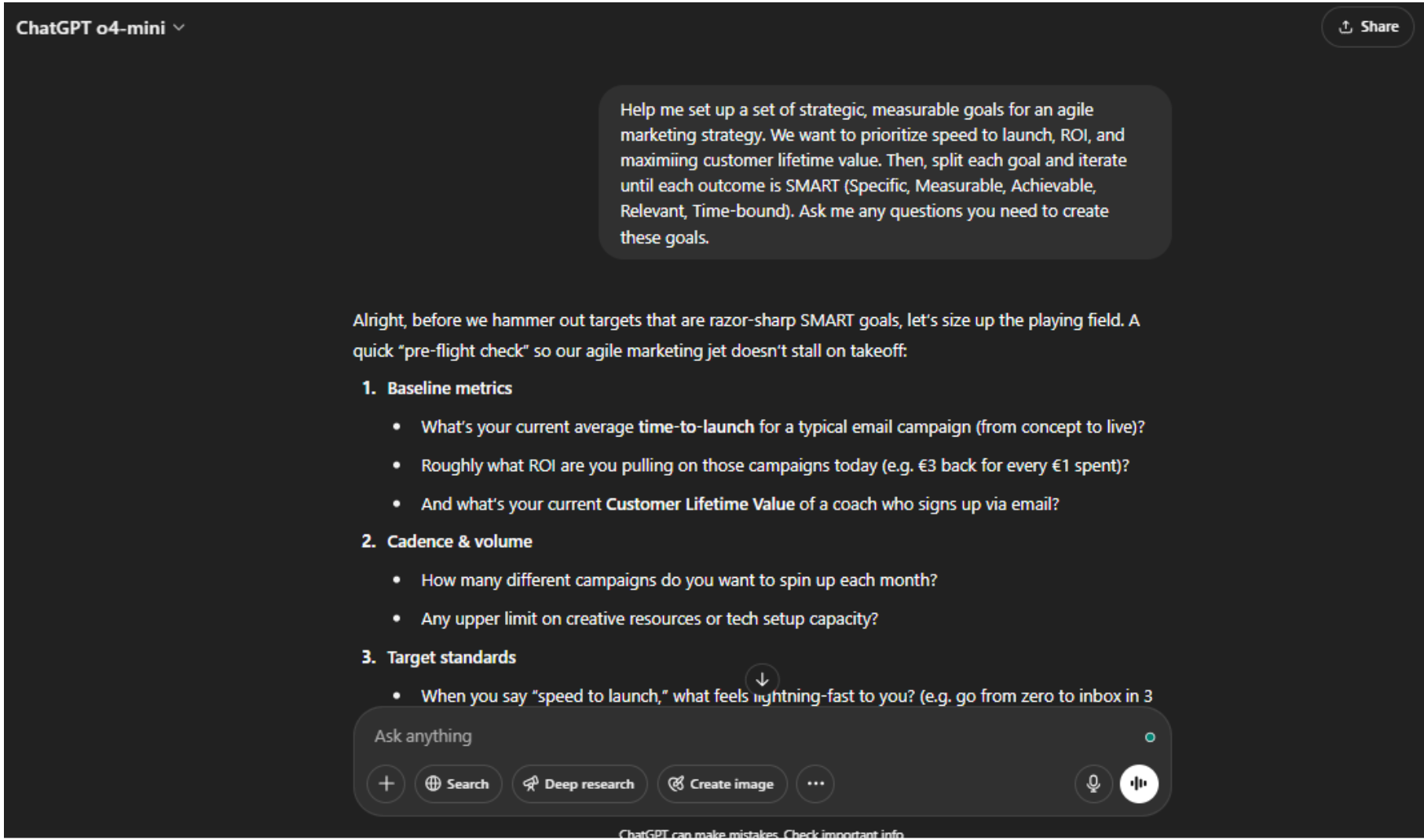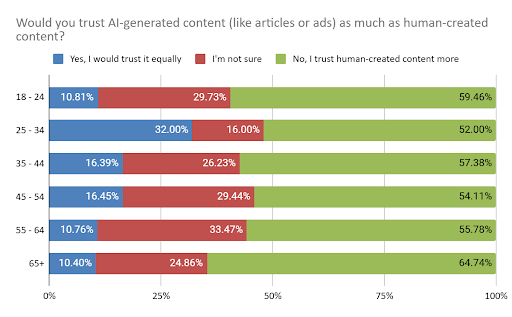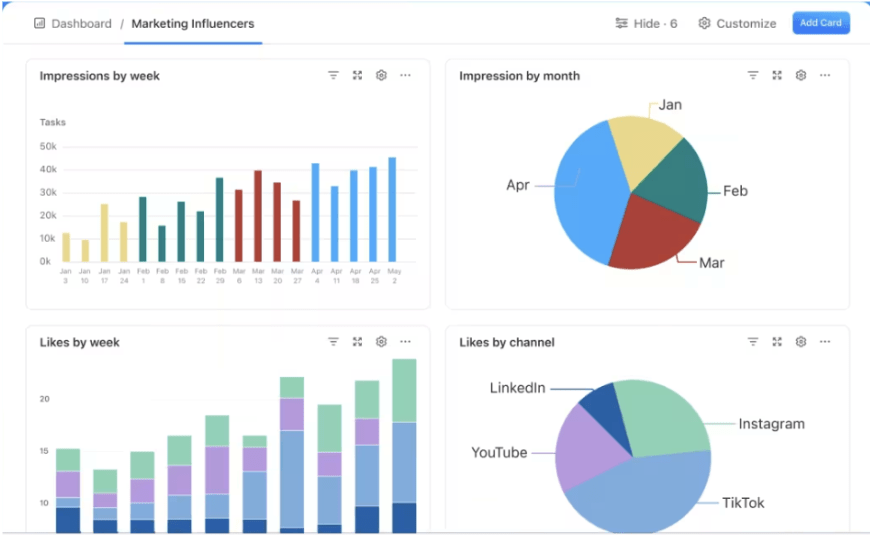How to Build a More Agile Marketing Strategy with the Help of AI Tools
See how AI tools can streamline workflows, maximize CLV, and fuel continuous improvement in your agile marketing strategy.
In today’s hyper-competitive landscape, business leaders must move faster than ever to capture shifting customer attention spans and outpace emerging disruptors. Agile marketing strategy powered by AI-driven tools offers precisely that edge: rapid iteration, data-backed decisions, and seamless cross-functional teamwork.
A recent global survey found that 94% of marketers allocated AI budgets in 2024. That’s up from just experimentation in prior years, and 75% plan to increase spending in 2025. This highlights AI’s transition from nice-to-have to mission-critical investment.
Yet most business leaders struggle with embedding AI into an agile approach without drowning in tech jargon or endless pilot projects. This guide walks you through each step—defining outcomes, picking the right tools, weaving AI into sprint rituals, empowering teams via prompt-engineering platforms, and measuring continuous improvement.
1. Set Clear, Business-Driven Objectives
Every successful agile marketing strategy begins with unambiguous goals and key performance indicators (KPIs). Business leaders know that “fast” without “focused” wastes resources and breeds confusion. By leveraging conversational AI, you can pinpoint and crystallize your strategic imperatives in minutes rather than days.
As a decision maker looking to use AI in marketing, you likely already have a set of strategic outcomes. If not, you can use generative AI tools like ChatGPT to draft and refine these objectives based on your business model. Here’s a prompt you can use:
“Help me set up a set of strategic, measurable goals for an agile marketing strategy. We want to prioritize speed to launch, ROI, and maximizing customer lifetime value. Then, split each goal and iterate until each outcome is SMART (Specific, Measurable, Achievable, Relevant, Time-bound). Ask me any questions you need to create these goals.”

Screenshot provided by the author
Once you have a set of measurable goals, the next step is to map AI use cases to your priorities and your team’s workflows.
Here are questions you can ask that uncover potential use cases for integrating AI into an agile marketing strategy:
- Are there any content bottlenecks? Is your ad creative team struggling to develop lots of ideas to test and beat the control?
- Is the team slow to respond to campaign results and make quick decisions?
- Is there an overload of customer queries or replies from email subscribers on marketing emails?
Next, share your SMART objectives and AI-use case map in a collaborative workspace (typically, project management tools like ClickUp or Monday.com). Then, use their AI-powered summary features to generate concise one-pagers for the executive team. This ensures buy-in before any code is written or vendors are engaged.
By using conversational AI to define and align on objectives, you build an agile marketing mindset from day one—speed without sacrificing clarity.
2. Select the Right AI Tools for Your Agile Needs
Let’s take a look at some of the most common applications for AI in an agile marketing strategy—and where Agent WordLift can be beneficial.
Content Creation
AI-driven copywriting tools like ChatGPT can draft entire email sequences, ad headlines, and landing page snippets in minutes—enabling 51% of marketers to leverage AI for content creation and ideation rather than starting from scratch.
With Agent WordLift, you can leverage your brand’s knowledge graph to generate AI-driven content briefs that align closely with both SEO best practices and your unique editorial standards. It can also:
- Produce outlines for new articles, ensuring every draft covers the topics, questions, and keywords that matter most to your audience.
- Maintain brand voice by applying your style guide at scale: upload tone-of-voice assets and style rules so every AI output automatically aligns with your brand personality.
- Generate first drafts based on defined business objectives.
AI doesn’t just help with content creation.
Video personalization platforms such as Synthesia automate the production of on-brand promo clips and one-to-one outreach videos.
Image-generation engines like DALL·E 3 have helped brands like Zalando slash creative lead times—from six to eight weeks down to just three or four days—while cutting associated costs by up to 90%.
Many platforms support brand-voice training—uploading style guides so AI outputs automatically align with tone guidelines.
However, AI-generated content can often lack nuance and personality and miss out on maximizing conversions with copy principles. Audiences are also getting smarter, recognizing plain AI-generated copy from a mile away. Combining AI with human editing and oversight is the way to go to maximize ROI, differentiate from your competitors, and keep the market’s attention on your brand.

Content Acceleration
Even the most creative campaigns can break down if the messaging lacks clarity. Using an AI-powered online grammar checker means that every piece of content, from emails to ads, is polished and professional. But beyond fixing typos, these tools help teams move faster by simplifying editing cycles, reducing back-and-forth, and maintaining brand voice consistency.
Additionally, Agent WordLift can assist in identifying missing facts or references in your drafts. Suppose you’re writing about a new product line. In that case, the Agent instantly flags where you can link to relevant category pages or provide recommendations on new ideas, such as use cases and pricing.
In an agile marketing strategy where speed and precision matter, leveraging AI for real-time language refinement helps teams pivot quickly without sacrificing quality.
Real-Time Insights
Making fast decisions is great, but making quick decisions with real data behind them is what actually moves the needle. That’s where tools like Bright Data come in. You can gather public web data from live sources to track what competitors are doing, which products are gaining momentum, and how customers are reacting in real time.
Instead of guessing or relying on outdated trends, you’re working with real-time customer behavior insights that support sharper, quicker moves across your entire strategy.
Customer Engagement
Handling high volumes of customer queries drains resources and slows funnels. It creates delays, which irritate customers and harm your brand’s perception. AI-powered chatbots speed up customer interactions, making marketing more agile and responsive.
Take Cruise America, a leading RV rental company in the U.S. They use chatbots to handle a high volume of customer queries in real time, from booking assistance to trip planning. This immediate support increases customer satisfaction and frees up human agents for complex tasks. By automating these interactions, Cruise America has created a smoother user experience and accelerated its marketing funnel efficiency.
Workflow Automation & Dynamic Content
Automating repetitive tasks is at the heart of the agile approach, allowing your team to free up much-needed time for strategy and decision-making. Platforms like Zapier AI, HubSpot AI, and Make.com’s AI agents automate A/B test setups, email scheduling, and dynamic content insertion.
Additionally, Agent WordLift supports Zapier’s integration that allows you to trigger semantic enrichment workflows, such as automatic entity tagging and knowledge graph updates whenever you publish new content or add products to your CMS.
By combining WordLift’s semantic technologies with these automation platforms, you can build more intelligent marketing pipelines that not only push content out but also continually augment it with structured data and contextual metadata.
Ready for the future of marketing automation? Download the exclusive guide by Andrea Volpini to discover how the shift from Generative AI to Agentic AI is reshaping workflows, driving growth, and enabling smarter decision-making. It includes a fresh perspective on tools like Zapier, n8n, AirOps, and Make.
3. Embed AI into Your Agile Workflow
Turning tools into traction requires integrating them into day-to-day rituals. Here’s how to weave AI into sprints, Kanban boards, and hypothesis-driven experiments.
Knowledge Graph Integration
Leverage a knowledge graph to semantically model your organization’s critical data—linking content, entities (people, places, topics), and internal metadata into a unified, interconnected dataset that AI-driven agents can query for richer, context-aware outputs. In our approach, the knowledge graph serves as the cornerstone, training your AI agent on your data so that every interaction and generated insight is rooted in your brand’s unique information and expertise. Embedding a knowledge graph into your workflow enables AI-driven agents to surface the most relevant products and category insights in real-time, accelerating hypothesis validation and campaign optimization.
Sprint Planning with AI Forecasts
Kick off each two-week sprint by reviewing demand projections from Google Analytics Intelligence or BigQuery ML (Vertex AI). Import these forecasts directly into your Asana, ClickUp, or Trello backlog via built-in integrations or API. Prioritize items that align with predicted peaks—whether it’s a holiday sale or a new product launch. This ensures your focus matches market reality.
Kanban-Style Automation
Use Trello AI or Monday.com AI to automate status updates. When a content draft is ready, AI bots can move cards to “Review,” assign the correct editor, and even schedule Zoom reviews. Asana Intelligence’s “Smart Status” feature flags blockers and open questions automatically, so no task slips through the cracks.
Hypothesis-Driven Experimentation
Treat every AI pilot as a scientific test. With Optimizely AI or VWO Copilot, you can generate test variants, allocate traffic dynamically, and receive statistical read-outs within hours instead of days. Frame each experiment with a hypothesis (e.g., “Using AI-generated subject lines will lift open rates by 10%”), run for a fixed window, and review results in sprint retrospectives.
Automated Retrospective Inputs
In your sprint close-out, leverage AI summaries from tools like ClickUp AI to compile performance snapshots—top-performing channels, content velocity, and customer feedback highlights. You can also create dashboards with charts that show the current status scores, such as net promoter score (NPS), customer satisfaction, and number of hours shaved off from manual work. This makes it easier to report and discuss status in the next C-suite meeting and ensures your next sprint plan is rooted in actual data, not gut calls.
Here’s an example of ClickUp’s dashboard for influencer marketing:

4. Empower Cross-Functional Teams
True agility requires everyone, from copywriters to the CFO, working in sync. AI can both enable and complicate collaboration; these steps ensure teams stay aligned and productive.
Define Roles & Guardrails
Assign an “AI Owner” to each major platform. Use a modern documentation tool like Confluence with Notion AI to document data-quality SLAs, ethical guidelines, and approval workflows. This clarifies accountability and prevents rogue AI experiments that silo insights.
AI-Plus-Human Training
Equip teams with prompt-engineering skills via platforms like PromptLayer or LangSmith. These provide shared repositories of effective prompts, version control, and usage analytics. Host weekly “AI Jam” sessions where marketers and data analysts co-create prompts, review outputs, and refine best practices, cultivating an agile mindset and growth culture.
Collaborative Rituals
Expand your daily standup to include an “AI Insights Review” segment. Pull up GA4 Analytics Intelligence dashboards or Power BI AI Insights widgets to monitor sudden KPI spikes or sentiment shifts. This real-time visibility empowers the entire team (not just analysts) to pivot quickly.
Cross-Department AI Agents
Looking ahead, consider deploying internal AI agents that can draft status reports, triage customer support tickets, and even schedule social media posts across teams. ServiceNow and Salesforce are already training AI agents for multi-department collaboration, reducing manual handoffs by over 50% in early pilots.
5. Embed a Culture of Continuous Improvement
Long-term success is more than just adopting new tools. It needs an organizational mindset that awards iteration, learning, and innovation.
Start by securing executive sponsorship for your Agile-AI pilots and make early wins highly visible—whether it’s faster launch times, higher conversion rates, or reduced support costs. Present these metrics in your regular board reports (for example, using Tableau AI or Looker Studio dashboards) to create momentum and demonstrate tangible ROI, driving adoption across departments.
At the same time, put in place clear governance and ethical guardrails. Document your AI usage policies—covering data privacy, bias mitigation, fact-checking, and vendor risk—in a centralized knowledge base like Confluence or Notion AI. Schedule routine audits of tool outputs to make sure there’s consistent compliance with brand safety standards and relevant regulations, so that as you scale, you never sacrifice integrity or customer trust.

To institutionalize continuous improvement, establish an AI-Agile Center of Excellence. Using a project management hub such as ClickUp or Asana, build a centralized repository of best practices, prompt libraries, training modules, and vendor evaluations. This will serve as both the training ground and the innovation engine for your teams.
Conclusion
Marketing with AI isn’t some far-off dream. It’s right at your fingertips. Pick one small sprint, choose the most appropriate AI tools, launch it, measure the boost, and tweak as you go. Before you know it, you’ll have a self-reinforcing cycle of rapid wins, smarter decisions, and creative breakthroughs that turns your team into a truly agile, data-driven engine—ready for whatever comes next.